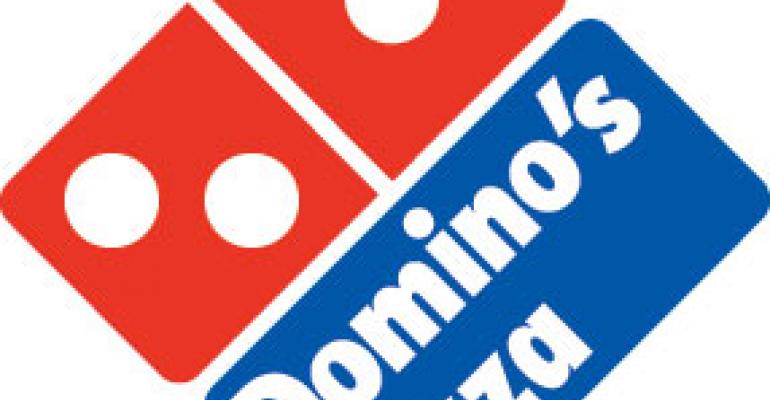Officials for Ann Arbor, Mich.-based Domino’s Pizza Inc. said they were pleased with the company’s global performance in 2011, but chief executive Patrick Doyle said the brand has not achieved the momentum it wanted in terms of domestic restaurant growth.
The number of franchised locations in the United States grew in 2011, he said, but mostly as a result of strong franchisees acquiring 58 company-operated locations. Since 2008, weaker franchise operators were asked to leave the system by selling their underperforming units to stronger franchisees. But in 2012, Domino’s wants to start growing the system again by building new restaurants, Doyle said.
“We expected to see better domestic store growth numbers in 2011, based on the good year our operators had in 2010,” Doyle said Tuesday during Domino’s fourth-quarter earnings call. “However, we experienced spikes in commodity prices in 2011, which eroded store margins during the summer and made franchisees more hesitant to expand.”
Domino’s, whose 4,907 locations in the United States include 4,513 franchised units, will work to improve unit economics to better allow franchisees to grow in 2012, Doyle said.
“There was a period of time where the best return [franchisees] could get would be to buy some stores from a franchisee leaving the system,” he said. “Those opportunities start to disappear, and those who want to grow are going to need to build new stores.”
Growing sales, mitigating costs
In the fourth quarter, new side dish products like Stuffed Cheesy Bread and Parmesan Bread Bites helped Domino’s improve its levels of retention, customer satisfaction and guest frequency, while contributing to increased check averages and profits, Doyle said.
Domino’s said it will also focus on its bottom line with labor improvements. During the Jan. 1-ended fourth quarter, nearly 2-percent improvements to labor costs resulted from a combination of higher sales and leverage from online ordering and carryout sales.
“Even though I talk about the store-level pressure on margins, the fourth quarter was better for our corporate stores and our franchisees,” Doyle said. “That’s nice forward progress there, and it’s a trend that we need to keep going. … We’ve got a newer, higher level of sales, and the stores as they adjust to that higher level are figuring out how to get more efficient over time and settle into that new higher base and grow from it.”
Domino’s rang up about $1.8 billion in online sales globally, or about $34 million a week, in 2011, Doyle said. The chain’s domestic system now handles one-third of its orders online, and it had its best online-sales week ever during the week of Cyber Monday in December, Doyle added.
Continued from page 1
Though they are back in the news, rising gas prices don’t significantly affect Domino’s short-term profitability in the form of direct reimbursements to delivery drivers or shifts in ordering behavior between carryout and delivery, Doyle said.
“The longer-term concern is whether this flows through to food costs,” Doyle said. “That’s the one that’s potentially big enough that it could turn into a headwind if oil prices continue to move up materially.”
Chief financial officer Mike Lawton said 81 percent of Domino’s increase in fourth-quarter revenue, or about $18 million, came from higher supply chain sales resulting from higher prices for commodities like cheese. The chain’s cost of goods was up about 6 percent for the fourth quarter and the full year.
“Our expectation for 2012 is that the growth in our market basket will moderate somewhat and increase 1 percent to 2 percent over 2011 levels,” Lawton said.
International isn’t broke
Domino’s 4,835-unit international division largely will stay the course with its master-franchise model that has yielded 18 consecutive years of annual same-store sales growth.
While the company has a larger system internationally than its next largest competitor, it still only has about 11 percent market share for off-premise pizza sales outside the United States, meaning it still has room for significant growth, Doyle said. He added that existing markets like the United Kingdom, Turkey and India, will produce the majority of sales growth in the international division the next few years.
For the foreseeable future Domino’s will stick to its master-franchisee model for international growth to fill out those key markets or expand into new ones, rather than seed new territories with company stores, Doyle said.
“We love the model,” Doyle said. “I would never say never: If we hit a point with a market and think our getting involved would make a material difference, we’d leave that open as an option. But we haven’t felt the need to do that or frankly seen the opportunity.”
Contact Mark Brandau at [email protected].
Follow him on Twitter: @Mark_from_NRN

